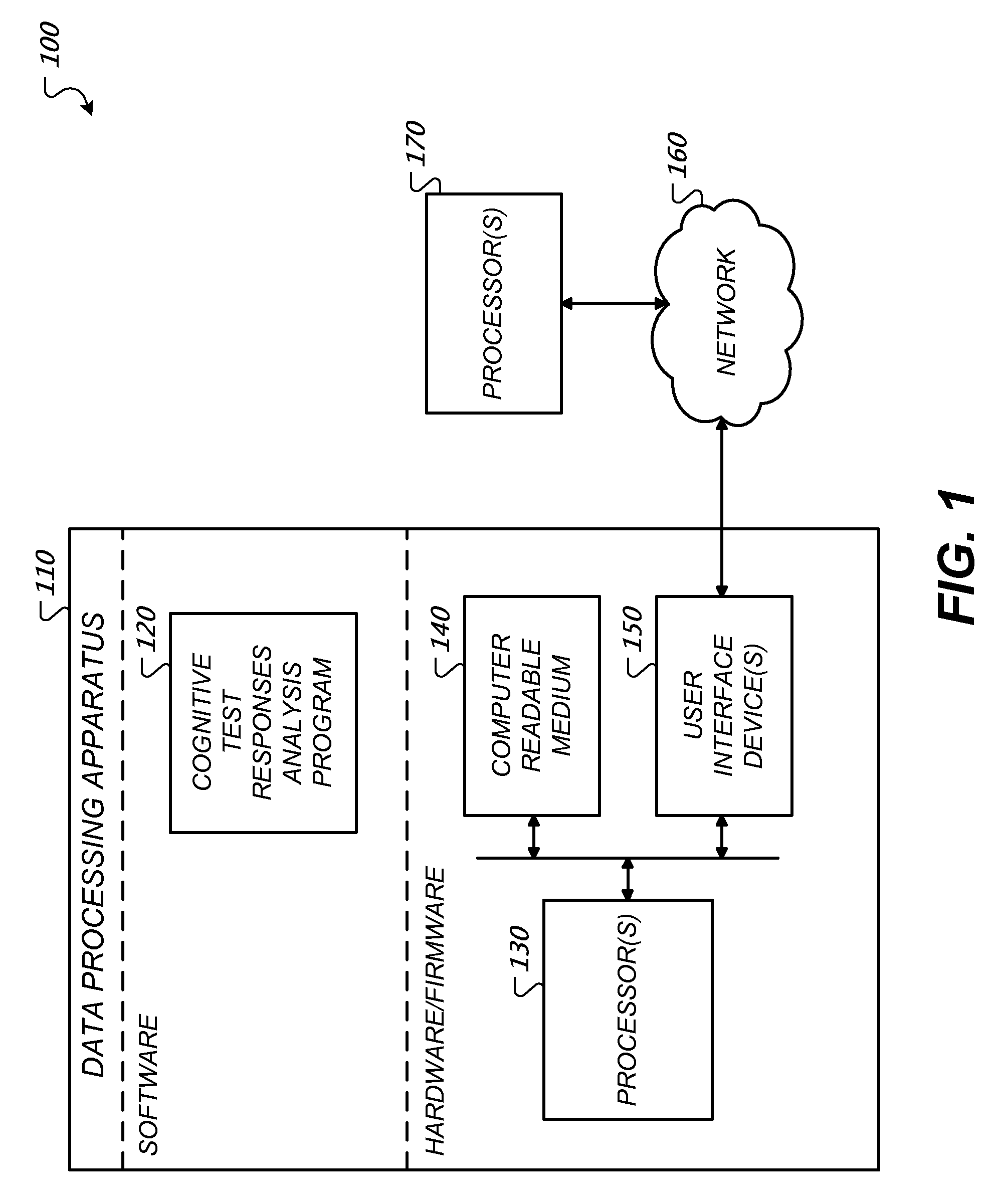Non-natural pattern identification for cognitive assessment
a cognitive assessment and non-natural technology, applied in the field of cognitive function assessment, can solve the problem of typical claims costing more than $200,000 per case, and achieve the effect of substantial savings and increased detection ability
- Summary
- Abstract
- Description
- Claims
- Application Information
AI Technical Summary
Benefits of technology
Problems solved by technology
Method used
Image
Examples
Embodiment Construction
[0019]FIG. 1 shows an exemplary system 100 used to identify cheaters on a cognitive test. A data processing apparatus 110 can include hardware / firmware and one or more software programs, including a cognitive test responses analysis program 120. The cognitive test responses analysis program 120 operates in conjunction with the data processing apparatus 110 to effect various operations described in this specification. The program 120, in combination with the various hardware, firmware, and software components of the data processing apparatus, represents one or more structural components in the system, in which the algorithms described herein can be embodied.
[0020]The program 120 can be an application for performing analysis on data collected to assess the cognitive function of a subject. An application refers to a computer program that the user perceives as a distinct computer tool used for a defined purpose. An application can be built entirely into an operating system or other oper...
PUM
 Login to View More
Login to View More Abstract
Description
Claims
Application Information
 Login to View More
Login to View More - R&D
- Intellectual Property
- Life Sciences
- Materials
- Tech Scout
- Unparalleled Data Quality
- Higher Quality Content
- 60% Fewer Hallucinations
Browse by: Latest US Patents, China's latest patents, Technical Efficacy Thesaurus, Application Domain, Technology Topic, Popular Technical Reports.
© 2025 PatSnap. All rights reserved.Legal|Privacy policy|Modern Slavery Act Transparency Statement|Sitemap|About US| Contact US: help@patsnap.com



